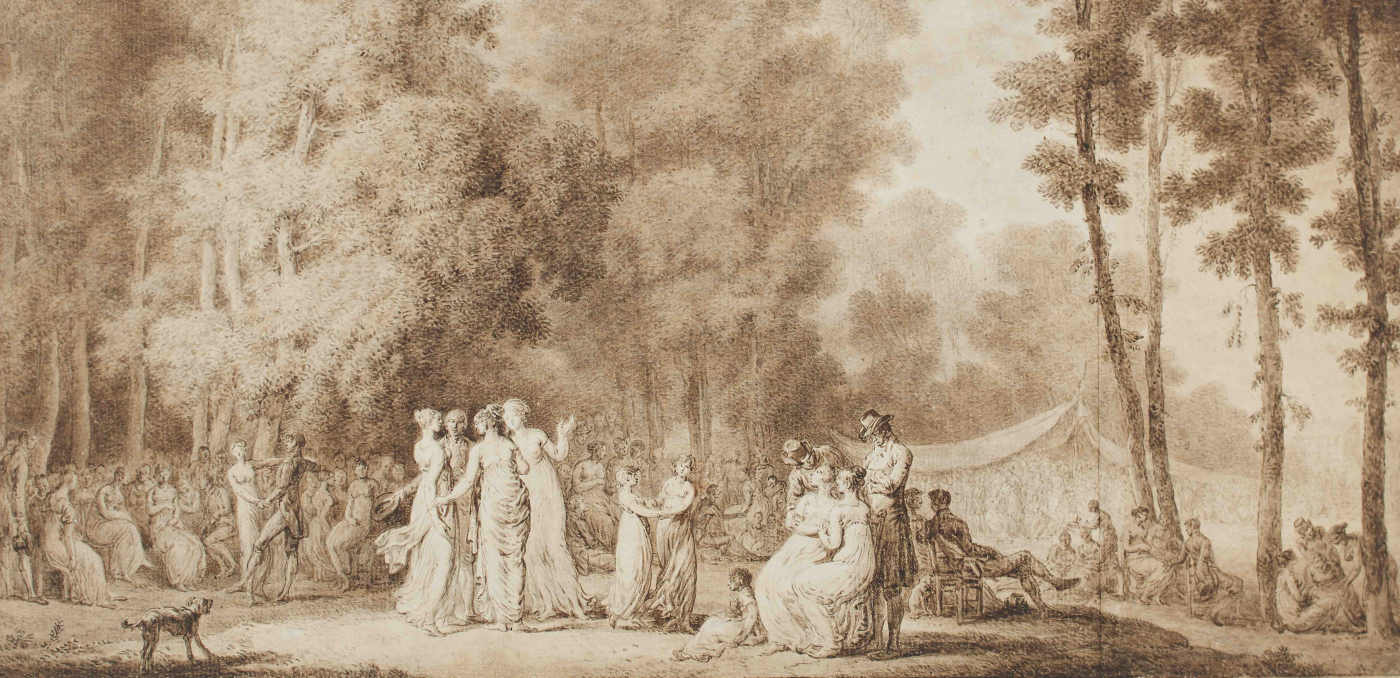Jean-Pierre Norblin de la Gourdaine
A Sentimental Reporter
September 9–December 11, 2022
Trained as a painter of battle scenes, an admirer of Rembrandt, and by vocation a decorator depicting courtly and idyllic scenes. He is considered the father of Polish genre painting and one of the leading artists of the Stanislavian era. Although Jean-Pierre Norblin de la Gourdaine was French, it was in Warsaw that he cultivated his talents to the full. To this day, his works charm viewers with the skilfulness and lightness of lines and attractive colouring. At the same time they are a valuable source of knowledge about political events and the everyday life of the various social classes in the Polish-Lithuanian Commonwealth in the second half of the eighteenth century.
The exhibition Jean-Pierre Norblin de la Gourdaine. A Sentimental Reporter is the first monographic display of this artist’s works in the history of The Royal Castle in Warsaw. The exhibition consists of 125 works of art from the collection of the Castle – oils, gouaches, watercolours, ink drawings and etchings. A large part of the collection on display consists of acquisitions made in 2018–2022 thanks to funding from the Ministry of Culture and National Heritage and The Royal Castle in Warsaw's Patron – KGHM Polska Miedź S.A. Complementing the magnificent collection are works donated this year by the Ciechanowiecki Foundation. Among the exhibits are works which were hitherto unknown or believed lost.
Jean-Pierre Norblin de la Gourdaine (1745-1830), later known as Jan Piotr, was trained in Paris under the tutelage of Francesco Casanova who specialized in battle scenes, and at the Royal Academy of Painting and Sculpture. He arrived in Poland in 1774 at the invitation of Adam and Izabela Czartoryski. Initially employed as a teacher of drawing for their children, he quickly gained fame as a court decorator and painter of the aristocratic family. His work makes reference to the rococo style as influenced by Antoine Watteau. He was very successful at painting and drawing fête galante compositions – idyllic scenes depicting refined company at open-air festivities, surrounded by the lush vegetation of sentimental garden settings. Norblin’s work won the recognition of King Stanislaus Augustus Poniatowski. Several of his works found their way into the monarch’s collection. Norblin was also fascinated by the everyday life on Polish streets. He portrayed markets, fairs and crowded taverns with a chronicler’s flair.
On paper, he was fond of recreating the figures of itinerant traders, musicians, beggars and the physiognomies of old people marked by time. One of Norblin’s chief sources of inspiration was the work of Rembrandt, which was particularly reflected in his graphic oeuvre. The artist took a keen interest in Poland’s turbulent political life. He became famous as a documentalist of the Kościuszko Uprising and events related to the adoption of the May 3 Constitution. His works are among the most valuable iconographic sources of the times – of the crisis, restoration and fall of the Polish--Lithuanian Commonwealth.
In 1804, Jean-Pierre Norblin returned to France, where he resided until his death, yet he continued to create works inspired by his thirty-year stay in Poland. The artist was extremely sentimental about the lands that lay along the Vistula River. Both of his wives were Polish. His children were born and raised in Poland, and Jean-Pierre himself became the progenitor of a Polish-French family of artists. His eldest son Aleksander was a bronze artist, Marcin was an accomplished cellist, and Sebastian was a painter in the neoclassical style who was recognized in France. Jean-Pierre’s great-grandson, Stefan Norblin gained fame as a decorator in the art déco style. His grandson Wincenty and great-grandson Ludwik founded a famous metalware factory in Warsaw, which operated from 1834 to 1939 – from 1882 on Żelazna Street, and after its nationalization in 1947 – as Walcownia Metali ‘Warszawa’ – until 1981. Today, under the name ‘Fabryka Norblina’ (Norblin Factory), it is a multifunctional complex, which has been revitalized, with the Norblin Factory Museum which commemorates the history of the former factories.
Exhibition curator: Marta Zdańkowska, Royal Castle in Warsaw – Museum
Free entry













